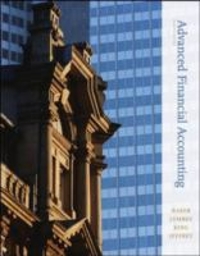Question
1. (TCO 4) The cost of the inventory that the business has sold to customers is called (Points : 3) inventory. cost of goods sold.
1. (TCO 4) The cost of the inventory that the business has sold to customers is called (Points : 3)
inventory.
cost of goods sold.
purchases.
gross profit.
Question 2.2. (TCO 4) Two accounts that would appear on the financial statements of a merchandising company that are not needed by a service company are (Points : 3)
cost of goods sold and depreciation.
cost of goods sold and net income.
cost of goods sold and inventory.
inventory and depreciation.
Question 3.3. (TCO 4) The inventory system that uses computer software to keep a running record of inventory on hand is the (Points : 3)
cost of goods sold inventory system.
periodic inventory system.
perpetual inventory system.
hybrid inventory system.
Question 4.4. (TCO 4) All of the following costs would be included in inventory except for (Points : 3)
freight-in.
advertising.
taxes paid on the purchase price.
insurance while in transit.
Question 5.5. (TCO 4) The specific-unit-cost method (Points : 3)
will produce the highest net income.
is also known as the specific identification method.
will produce the same ending inventory as the average cost method.
is also known as the cost-of-goods sold model.
Question 6.6. (TCO 4) When inventory prices are increasing, the FIFO costing method will generally yield a cost of goods sold that is (Points : 3)
higher than cost of goods sold under the LIFO method.
lower than cost of goods sold under the LIFO method.
equal to the gross profit under the LIFO method.
equal to cost of goods sold under the LIFO method.
Question 7.7. (TCO 4) When comparing the results of LIFO and FIFO when inventory costs are decreasing (Points : 3)
cost of goods sold will be the lowest using FIFO.
ending inventory will be the highest using FIFO.
cost of goods sold will be the highest using LIFO.
ending inventory will be the highest using LIFO.
Question 8.8. (TCO 4) The _____ principle states that the financial statements of a business must report enough information for outsiders to make knowledgeable decisions about the business. (Points : 3)
consistency
historical cost
disclosure
conservatism
Question 9.9. (TCO 4) The lower-of-cost-or-market rule is based on the accounting principle of (Points : 3)
disclosure.
materiality.
conservatism.
revenue.
Question 10.10. (TCO 4) A gross profit margin of 30% means that (Points : 3)
for each dollar of sales, the company has a cost of goods sold of seventy cents.
for each dollar of sales, the company has a gross profit of thirty cents.
for each dollar of sales, the company has a cost of goods sold of thirty cents.
both A and B are true.
Step by Step Solution
There are 3 Steps involved in it
Step: 1

Get Instant Access to Expert-Tailored Solutions
See step-by-step solutions with expert insights and AI powered tools for academic success
Step: 2

Step: 3

Ace Your Homework with AI
Get the answers you need in no time with our AI-driven, step-by-step assistance
Get Started


